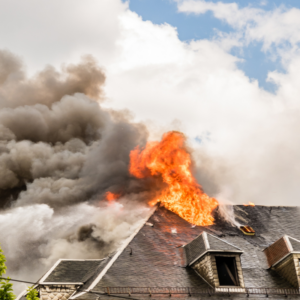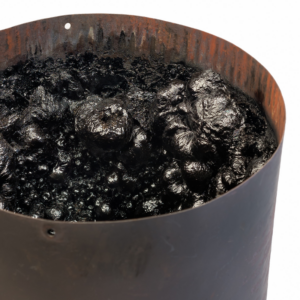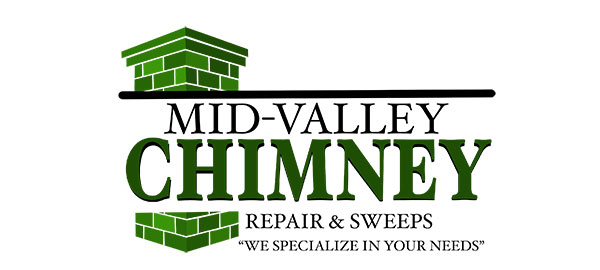 A warm, cozy fire in the fireplace can be one of the best ways to relax on a chilly evening. However, there are some risks that come with using a fireplace, one of the biggest being a chimney fire. In fact, heating equipment that isn’t maintained is one of the leading causes of house fires in the United States. The good news is there are simple steps you can take to reduce your risk of chimney fire, ensuring your home safety – as well as the value of your home – isn’t compromised.
A warm, cozy fire in the fireplace can be one of the best ways to relax on a chilly evening. However, there are some risks that come with using a fireplace, one of the biggest being a chimney fire. In fact, heating equipment that isn’t maintained is one of the leading causes of house fires in the United States. The good news is there are simple steps you can take to reduce your risk of chimney fire, ensuring your home safety – as well as the value of your home – isn’t compromised.
As experts in all things chimney, we here at Mid-Valley Chimney Repair & Sweeps know the importance of fireplace safety and investing in regular chimney care from a qualified professional – which is why we aim to keep homeowners all throughout the Montgomery County area educated and well-informed.
Here are three of the biggest culprits of chimney fires and what you can do to avoid falling victim to them.
The 3 Main Causes of Chimney Fires
What are the biggest culprits behind the start of chimney fires?
🔥 CREOSOTE
Creosote buildup is the most common cause of chimney fires. Creosote is a highly combustible substance that can collect in your chimney over time. It is created when wood is burned incompletely or inefficiently. The unburned tar-like substance condenses on the chimney walls, and if enough creosote builds up, it can ignite and start a chimney fire.
Creosote can ignite at just 451 degrees Fahrenheit and only an eighth inch of creosote buildup is enough to cause a chimney fire. Many fireplace fires will often burn in excess of 450 degrees. This makes creosote extremely dangerous.
What does creosote look like?
 In its early stages, it may look like a dark, sticky residue that is usually brown or black in color. As it continues to build up, it can take on a crusty or flaky appearance. In its most severe form, it can form hard, glossy deposits that are extremely difficult to remove.
In its early stages, it may look like a dark, sticky residue that is usually brown or black in color. As it continues to build up, it can take on a crusty or flaky appearance. In its most severe form, it can form hard, glossy deposits that are extremely difficult to remove.
Over time creosote will build up no matter how efficiently you burn, since it’s a natural byproduct of burning. However, there are a number of different ways you can slow the buildup of creosote:
- Burn only seasoned wood. This means wood that has been dried for at least six months to a year. Burning wet or green wood can create more creosote buildup. The wood you burn should be light in weight and have a pleasant clunk when knocked against other log. If it gives a low and dull “thunk,” it is probably not dry enough to be efficiently burned.
- Make sure you have good airflow. A chimney with restricted airflow can create more creosote buildup. Creosote moves up the chimney with the smoke, collecting on the lining of the flue as it condenses. The better the airflow, the more quickly smoke can move up and out of your chimney and the less likely creosote will have time to condense inside your chimney.
- Have your chimney inspected and swept (cleaned) by a professional chimney sweep at least once a year. The truth is, creosote simply cannot be stopped completely. Having your chimney professionally serviced is the only way to keep creosote from building up. Mid-Valley Chimney Repair & Sweeps is your best friend when it comes to keeping your chimney swept and less likely to experience a chimney fire.
🔥 DEBRIS BUILDUP
Debris buildup is another common cause of chimney fires. Leaves, twigs, and other outdoor debris can easily find their way into your chimney and quickly build up. If the buildup is severe enough, it can create a blockage that prevents smoke and heat from escaping. Not only is the debris flammable and prone to igniting, carbon monoxide exposure can become a concern.
To prevent debris building up in your chimney make sure your chimney has a chimney cap to prevent debris and animals from getting inside. Mid-Valley Chimney Repair & Sweeps are experts in chimney cap design and installation. Finding the right size, style, and material for your chimney is where we excel.
🔥 ANIMAL INVASION
Animals that are looking to make a home in your chimney are a huge problem. Birds, squirrels, and rodents are the most common animals that try to get inside chimneys, as they are attracted to the warmth and shelter from wind and rain that a chimney provides. Unfortunately, if they are able to get inside, they can build nests and create blockages that can lead to chimney fires.
Having an appropriate chimney cap installed is the best way to prevent animals from entering your chimney. As with unwanted debris, a properly fitted and installed chimney cap will allow air flow out while keeping debris and animals away. Mid-Valley Chimney Repair & Sweeps are well versed in chimney cap installation. Our team of trained technicians will make sure that your chimney is guarded against the dangers of collected debris and shelter seeking animals.
Stay Safer By Working With Us
If you do experience a chimney fire, it’s important to take immediate action. Call the fire department right away, and make sure to evacuate your home. Do not attempt to put out the fire yourself, as it can be extremely dangerous. After everyone is safe, the fire department has been called, and the fire is put out, make sure to have your chimney inspected to assess any damage and have necessary repairs completed before next use.
Mid-Valley Chimney Repair & Sweeps have been keeping Cincinnati and the surrounding areas safer & cozier since 2006. Our experience and training make us your greatest ally when it comes to keeping your chimney ready for use, maintained, and working at its peak efficiency.
Call us today at 513-727-0994 or book online to schedule a cleaning or an inspection.
